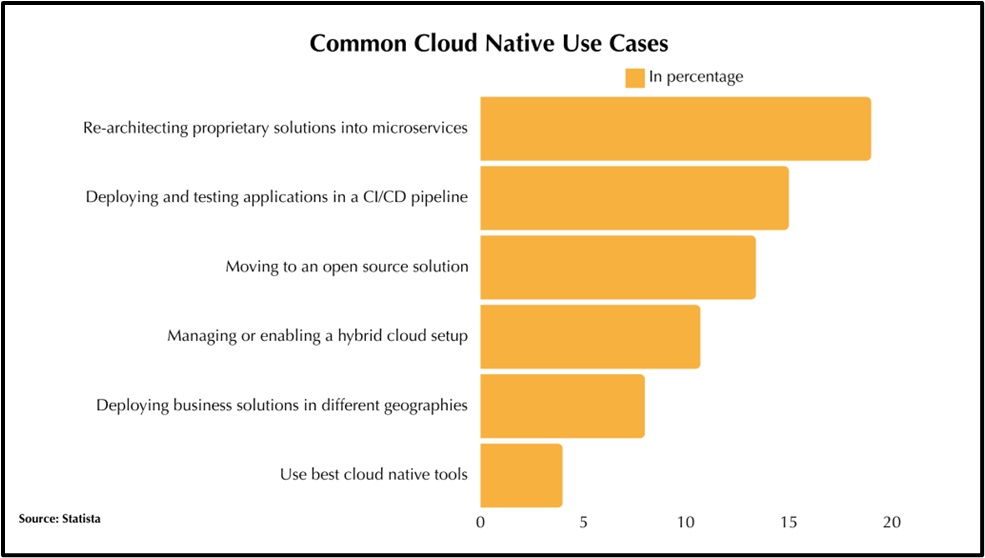How to Design and Create Cloud-Native Applications for Data Analysis
Are you a data scientist, analyst, or IT professional seeking to leverage cloud computing for your data analysis projects? We understand your challenges in managing large datasets, scaling your analysis, and maintaining cost-effectiveness.
This guide will walk you through designing and creating cloud-native applications for data analysis. By the end of this article, you'll have a clear roadmap for building robust, scalable, and efficient cloud-native data analysis applications that can transform your organization's data capabilities.
What are Cloud-Native Applications?
Cloud-native applications are software programs designed specifically to run in cloud computing environments. They are built to fully exploit cloud infrastructure, including scalability, elasticity, resilience, and automation. These applications are typically composed of microservices, use containerization technologies, and are managed through orchestration platforms.
Benefits of Data Analysis
Cloud-native applications offer several advantages for data analysis. They allow you to easily handle growing data and user demands. You only pay for the resources you use and, you get access to a wide range of cloud services and tools.
Additionally, they facilitate team collaboration and data sharing, while leveraging cloud-based machine learning and AI services for advanced analytics. Investing in data analyst paid training can maximize these benefits by providing your team with the necessary skills and knowledge to fully utilize these tools and services effectively.
This training ensures your team stays current with the latest advancements in data analysis and cloud computing. As a result, your organization can achieve greater efficiency and accuracy in its data analysis projects.
|
Aspect |
Traditional Applications |
Cloud-Native Applications |
|
Scalability |
Limited, often requires hardware upgrades |
Highly scalable, can automatically adjust to demand |
|
Cost |
High upfront costs, ongoing maintenance |
Pay-as-you-go model, lower upfront costs |
|
Deployment |
Time-consuming, often manual |
Rapid, automated deployments |
|
Updates |
Disruptive, scheduled downtime |
Continuous updates with minimal disruption |
|
Data Processing |
Limited by local resources |
Access to powerful cloud-based processing |
|
Collaboration |
Often siloed, limited sharing |
Improved team collaboration and data sharing |
|
Advanced Analytics |
May require significant investment |
Easy access to AI and ML services |
|
Maintenance |
Regular hardware and software upkeep |
Managed services reduce the maintenance burden |
Designing Cloud-Native Data Analysis Applications
When designing cloud-native applications for data analysis, there are several key aspects to consider.
Architecture Considerations
A microservices architecture is recommended to break down your application into smaller, independently deployable services. This approach allows for easier maintenance and updates, independent scaling of components, and faster development and deployment cycles. For example, you might have separate microservices for data ingestion, processing, analysis, and visualization.
Implementing an event-driven architecture is also beneficial for real-time data processing and analysis. This design pattern allows your application to react to changes in data streams, process data asynchronously, and decoupled components for better scalability.
Data Management Strategies
Choosing appropriate cloud storage solutions based on your data types and access patterns is crucial for optimal performance. Consider using object storage for unstructured data, managed databases for structured data, and data warehouses for analytical workloads.
For data processing, implement efficient pipelines using cloud-native technologies. This includes batch processing on cloud platforms and stream processing leveraging cloud-based streaming services.
Scalability and Performance
Design your application to scale horizontally by using auto-scaling groups for compute resources, implementing caching mechanisms, and optimizing database queries and indexing.
Security and Compliance
Incorporate security best practices by implementing identity and access management (IAM), encrypting data at rest and in transit, using virtual private clouds (VPCs) for network isolation, and complying with relevant data protection regulations.
Addressing Data Governance in Cloud-Native Applications
Data governance is a critical aspect of cloud-native data analysis applications. It involves managing data availability, usability, integrity, and security. In cloud environments, implement data catalogs to maintain an inventory of data assets and their metadata.
Establish data lineage tracking to understand the flow and transformations of data throughout your application. Implement role-based access control (RBAC) to ensure that only authorized personnel can access sensitive data. Consider using data masking and tokenization techniques to protect personally identifiable information (PII).
Regularly audit your data governance practices and stay compliant with industry-specific regulations. Leverage cloud-native tools for data classification and tagging to enhance data discovery and management. By prioritizing data governance, you'll build trust in your data analysis results and maintain regulatory compliance.
Creating Cloud-Native Data Analysis Applications
Now that we've covered the design principles, let's explore the process of creating cloud-native applications for data analysis.
Choose Your Cloud Platform: Select a cloud platform that best suits your needs. Consider factors such as available services and tools, pricing models, geographic availability, and existing expertise within your team.
Set Up Your Development Environment: Prepare your development environment by installing the necessary SDKs and CLI tools for your chosen cloud platform, setting up a version control system, and configuring continuous integration and continuous deployment (CI/CD) pipelines.
Implement Core Components: Create microservices for data ingestion, develop data processing pipelines, implement data analysis components, and create data visualization components. Utilize cloud-based services and tools specific to your chosen platform to streamline these processes.
Implement DevOps Practices: Adopt DevOps practices to streamline development and deployment. Use Infrastructure as Code (IaC) tools to manage cloud resources, implement CI/CD pipelines, and set up monitoring and logging using cloud-native observability tools.
Optimize and Refine: Continuously improve your cloud-native data analysis application by monitoring performance and costs using cloud-native monitoring tools, optimizing resource allocation and scaling policies, refining data processing algorithms and analysis techniques, and staying updated with new cloud services and features.

Leveraging Serverless Computing for Data Analysis
Serverless computing offers unique advantages for cloud-native data analysis applications. It allows you to run code without managing the underlying infrastructure, enabling you to focus on your analysis logic. Implement serverless functions for data preprocessing, transformation, and lightweight analytics tasks.
Use serverless databases for flexible, pay-per-use data storage. Leverage serverless data warehouses for scalable analytical queries. Implement event-driven serverless architectures to trigger data processing workflows automatically.
Serverless computing can significantly reduce operational overhead and costs, especially for intermittent or variable workloads. However, be mindful of potential cold start latencies and execution time limits when designing your serverless components.
Conclusion
Cloud-native apps are changing the game for data analysis. They offer better scalability, cost savings, and access to powerful tools. While the shift may seem challenging, the benefits are worth it. By following the steps outlined here, you'll be well on your way to creating flexible, efficient data analysis solutions. Adopt the cloud-native approach and unlock new possibilities for your data projects.
Frequently Asked Questions
Which cloud platform is best for building data analysis applications?
The best cloud platform depends on your specific needs. Many cloud platforms offer robust tools for data analysis. Consider factors like existing expertise, required services, and pricing.
How can I ensure data security in cloud-native applications?
Ensure data security by implementing encryption, using identity and access management, following compliance standards, regularly updating systems, and leveraging cloud provider's security features like virtual private clouds.
What skills do I need to develop cloud-native data analysis applications?
Developing cloud-native data analysis applications requires skills in cloud computing, containerization, orchestration, microservices architecture, DevOps practices, and proficiency in data analysis tools and programming languages.
Key Takeaways
- Cloud-native applications offer superior scalability and cost-effectiveness for data analysis.
- Microservices architecture and event-driven design are crucial for building flexible data analysis applications.
- Choosing the right data storage and processing solutions is essential for optimal performance.
- Implementing DevOps practices streamlines the development and deployment of cloud-native applications.
- Continuous optimization and refinement are necessary to maintain effective cloud-native data analysis applications.

